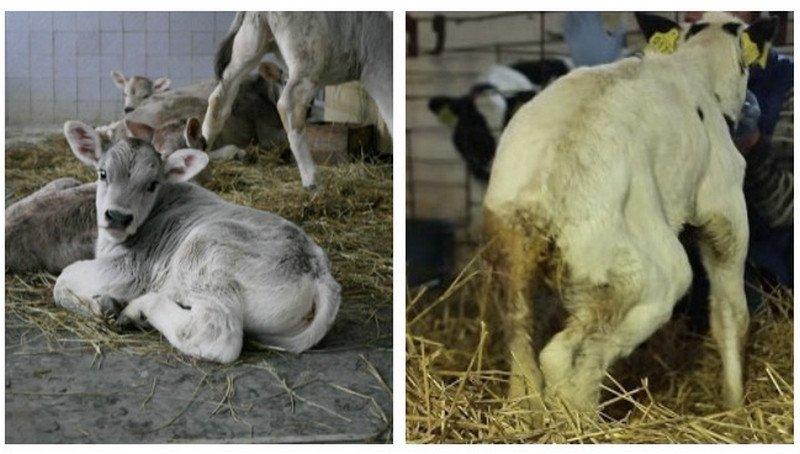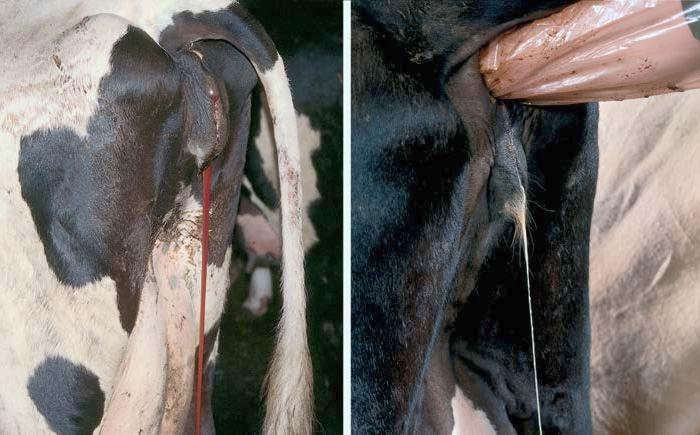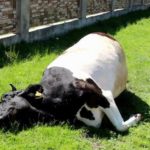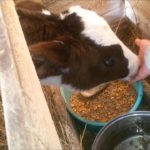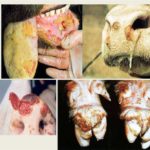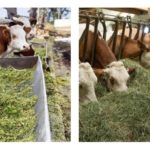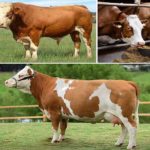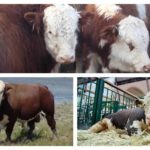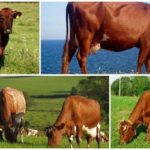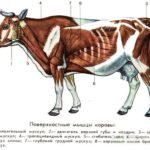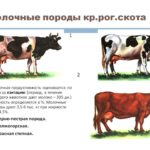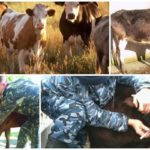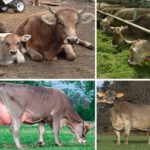Viral infections are not uncommon on livestock farms. They can spread quickly and affect large numbers of individuals. Sick animals are economic losses that are the consequences of a decrease in their productivity, temporary deterioration in health or death. Let's consider the causes and symptoms of bovine viral diarrhea, forms of the disease, diagnostic methods and treatment methods.
What is viral diarrhea
Viral diarrhea in cows – an infectious disease of cattle, which is characterized by inflammation and ulceration of the mucous membrane of the digestive tract, with characteristic symptoms – fever, diarrhea, rhinitis, conjunctivitis. Abortions are possible in sick pregnant cows.
Episotoology has established that the incubation period of viral diarrhea lasts 6-9 days. Cows can become infected throughout the year, but especially often during the cold season. Animals aged 6 months to 2 years are most sensitive to the virus. The death rate of cows from viral diarrhea can range from 4 to 100% and depends on the number of infected animals in the herd, the strain of bacteria, the conditions of the cows and other factors.
Economic damage
Viral diarrhea is one of the diseases that causes great financial damage to farms, especially with intensive meat and dairy farming. In herds in which frequent cases of the disease are observed, damage is expressed in slower growth and reduced weight gain, death of calves, abortions in cows throughout pregnancy or infertility.
Cows that have suffered from diarrhea during the initial period of pregnancy (up to 125 days) produce weak offspring or those with congenital malformations. Often calves from such cows are born weakened, grow slowly, and die at an early age from respiratory diseases. If they grow up and bear offspring themselves, they also remain a carrier of the virus and infect other cows. If infection occurs after 150 days of gestation, the calves will not carry the virus.
Diarrhea Dairy cattle provokes disturbances in reproductive function and various diseases of calves and young animals. Calves develop massive respiratory pathologies and gastrointestinal diseases, adults suffer from mastitis more often, and milk yield decreases.In beef cattle, productivity is also reduced due to weight loss as a result of weight loss or a decrease in the growth rate of young animals.
Pathogen and source of infection
The causative agent of diarrhea is a virus of the genus Pestivirus of the Togaviridae family. At t 20 ˚С it can be stored for years, in biological fluids – up to 6 months. Healthy cows become infected from sick cows; pathogens at different stages of the disease are released in feces, urine, discharge from the nose and eyes, with saliva and with exudate secreted from inflamed organs. Shedding of the virus can continue for another 4 months after the animal has recovered. Pathogens enter the animal's body through the digestive tract (with food and water) or through service personnel and care items. Infection is facilitated by a large concentration of cows in one area and their regrouping.
Symptoms of pathology
The disease can occur in 4 forms, which differ in symptoms and duration. There is also an asymptomatic form; in this case, the disease can be determined only by detecting specific antibodies in the blood serum.
Acute form
In the acute form, the same symptoms are observed as in the subacute form, but the depressed state of the animal is added. After another 1-2 days, the temperature rises again, hyperemia of the nasal mucosa appears, and mucus or mucus with pus begins to be released from it. With a strong leakage, the mucus dries on the face in the form of crusts, and erosions form under them. Tears flow from the eyes, catarrhal conjunctivitis appears.
Some individuals may experience a dry, hard cough. The gums, hard palate, lips, surface of the tongue and edges turn red, ulcers form on them, and later pus appears in them. Ulcerations may be found on the nostrils, nose and vagina.Sometimes animals limp. Diarrhea, intermittent or continuous, can last from 4 to 14 days, often ending in the death of the animal. In other cases, acute diarrhea becomes chronic. Feces with diarrhea are liquid, foul-smelling, foamy, with mucus.
Subacute
This form of viral diarrhea begins suddenly; cows and calves develop fever, tachycardia, increased breathing, and decreased or absent appetite throughout the day. There may be mild hyperemia, erosions on the oral mucosa, which quickly disappear; in some cows, nosebleeds, tears, cough, and diarrhea.
Abortive (atypical)
With this form of the disease, cows abort, fetuses experience hemorrhagic ulcerations on the mucous membrane, necrosis of skin, brain, lung tissue, inflammation of the skin and amniotic membranes.
Chronic
If the infection becomes chronic, the cows gradually lose weight; symptoms include hyperkeratoses and diarrhea. Erosion on the mucous membranes usually heals or curd-purulent layers appear on them (in case of complications). In some cases, necrotic tissue changes are found on the mucous membranes of the esophagus, abomasum and intestines.
Diagnosis of the problem
To test for the virus, various biological material is taken from animals suspected of having the disease - blood, feces, nasal swabs; tissue samples from the intestines, lungs, lymph nodes, spleen, trachea are taken from dead or killed animals. Samples of parenchymal organs and amniotic fluid are taken from aborted fetuses.
From viral diarrhea it is necessary to differentiate infectious rhinotracheitis, plague, catarrhal fever, paratuberculosis, foot and mouth disease, necrobacteriosis, hyperkeratosis.
How to Treat Viral Diarrhea in Cattle
Treatment for this disease has not been developed. Only symptomatic therapy with antibiotics and anti-inflammatory drugs is carried out. If the course of VD is severe, the animals are slaughtered.
After veterinary examination, meat and offal can be considered suitable for processing into sausages. If the result is positive, the meat can be processed, but the internal organs must be disposed of. The skins can be used after disinfection in a saline solution. Instructions for combating this disease indicate that the best treatment is prevention.
Vaccination scheme
Vaccination of livestock, carried out in a timely manner, significantly reduces the number of sick animals, allows to control the spread of the virus, and prevents deterioration in the health of cows and abortions. The vaccination program is designed by a veterinarian, its purpose is to prevent the birth of calves infected in the womb. To achieve this, cows are vaccinated before mating. Vaccination of cows against viral diarrhea is carried out using live and inactivated vaccines or a combination of both. The duration of immunity is 1-5 years, depending on the type of vaccine.
Other preventative measures
Viral diarrhea often appears on farms where cows are kept in poor sanitary conditions. To prevent infection, it is necessary to monitor the cleanliness of the premises, bedding, equipment and the animals themselves.
Infected calves should be immediately removed from healthy calves and treated immediately. It is important that newborn calves receive high-quality colostrum in the first 12 hours after birth, as it is an excellent source of immune activation. All newly acquired animals from other farms must be quarantined for 3 weeks.
Viral diarrhea is a serious infectious disease that can appear in any household. The disease mainly affects young animals and calves in the womb. Considering this feature of the disease, which has a negative impact on the productivity of animals and causes significant economic damage, it is necessary to provide the livestock with the most correct living conditions, a rich diet, and carry out vaccination in a timely manner.

